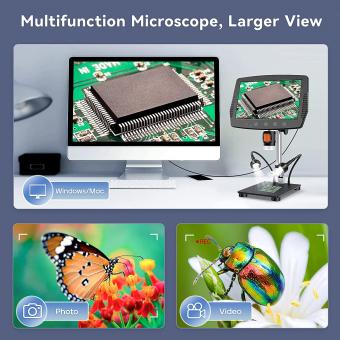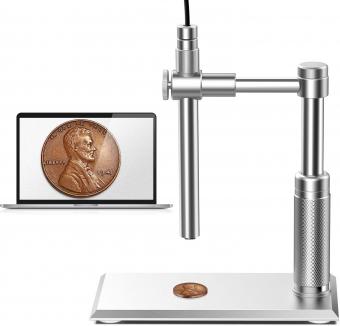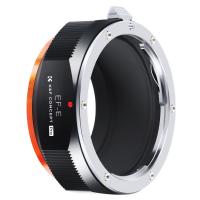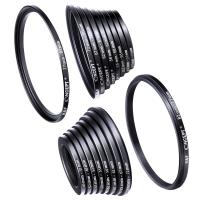What Are Light Microscopes Used To Observe ?
Light microscopes are used to observe a wide range of specimens and samples in various fields of study. They are commonly used in biology to observe cells, tissues, and microorganisms. Light microscopes allow scientists to study the structure and behavior of these biological entities, providing valuable insights into their functions and interactions.
In addition to biology, light microscopes are also used in materials science to examine the structure and properties of different materials. They can be used to analyze the composition, texture, and surface features of materials, aiding in research and development processes.
Furthermore, light microscopes find applications in forensic science, allowing investigators to analyze trace evidence such as fibers, hairs, and fingerprints. They are also used in medical diagnostics to examine blood samples, tissues, and other bodily fluids for the detection of diseases and abnormalities.
Overall, light microscopes are versatile tools that play a crucial role in scientific research, education, and various industries, enabling detailed observation and analysis of a wide range of specimens.
1、 Cellular structures and organelles in biological samples.
Light microscopes are widely used in the field of biology to observe cellular structures and organelles in biological samples. These microscopes use visible light to illuminate the sample and magnify the image, allowing scientists to study the intricate details of cells and their components.
One of the main applications of light microscopes is in the study of cell morphology. By using different staining techniques, scientists can visualize the different cellular structures, such as the nucleus, cytoplasm, and cell membrane. This enables them to study the size, shape, and arrangement of cells, which can provide valuable information about their function and health.
Light microscopes are also used to observe organelles within cells. Organelles are specialized structures that perform specific functions within the cell. By using specific stains or fluorescent markers, scientists can target and visualize specific organelles, such as mitochondria, endoplasmic reticulum, and Golgi apparatus. This allows for the study of organelle structure, dynamics, and interactions within the cell.
In recent years, advancements in light microscopy techniques have further expanded the capabilities of these microscopes. For example, confocal microscopy allows for the imaging of thick samples with high resolution and optical sectioning, providing three-dimensional information about cellular structures. Additionally, fluorescence microscopy techniques, such as fluorescence resonance energy transfer (FRET) and fluorescence recovery after photobleaching (FRAP), enable the study of protein-protein interactions, molecular dynamics, and cellular processes in real-time.
Overall, light microscopes are essential tools in the field of biology, enabling scientists to observe and study cellular structures and organelles in biological samples. The continuous advancements in microscopy techniques continue to enhance our understanding of the complex world of cells and their functions.
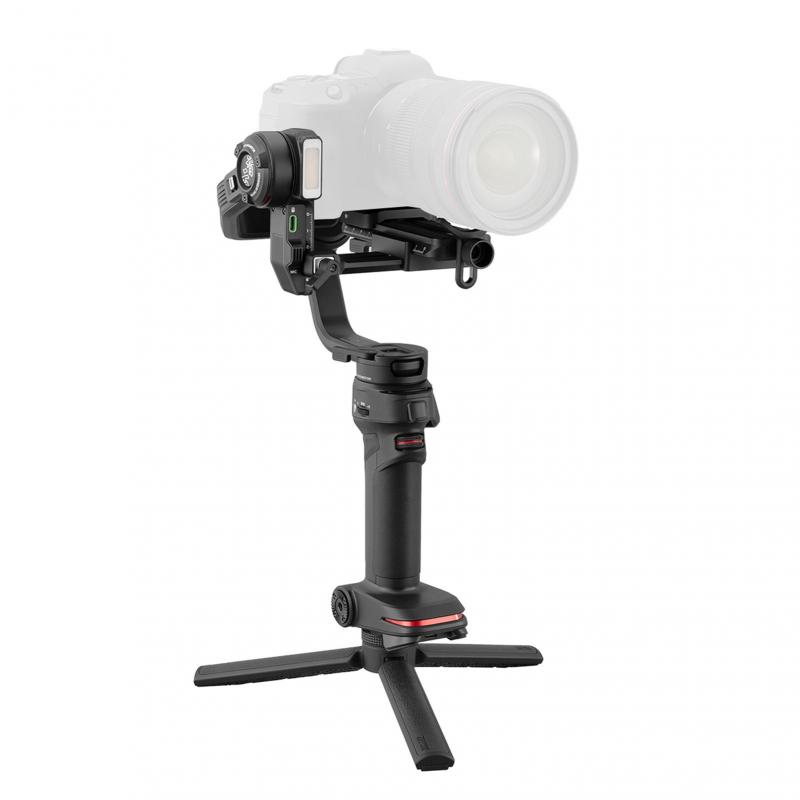
2、 Microorganisms, such as bacteria and fungi.
Light microscopes are widely used in various scientific fields to observe and study microorganisms, such as bacteria and fungi. These microscopes use visible light to illuminate the specimen and magnify it, allowing researchers to observe the intricate details of these tiny organisms.
Microorganisms play a crucial role in many aspects of life on Earth. They are found in diverse environments, including soil, water, and even within the human body. Light microscopes enable scientists to study the morphology, structure, and behavior of microorganisms, providing valuable insights into their biology and function.
One of the primary applications of light microscopes in microbiology is the identification and classification of microorganisms. By observing their cellular structures, scientists can determine the type of microorganism and distinguish between different species. This information is essential for understanding their role in disease, ecology, and other areas of research.
Additionally, light microscopes are used to study the growth and reproduction of microorganisms. By observing their cellular division and growth patterns, scientists can gain insights into their life cycles and understand how they adapt to different environments. This knowledge is crucial for developing strategies to control and manipulate microorganisms for various purposes, such as in medicine, agriculture, and biotechnology.
Furthermore, light microscopes are used to study the interactions between microorganisms and their environment or host organisms. For example, researchers can observe how bacteria interact with human cells or how fungi colonize plant tissues. These observations help in understanding the mechanisms of infection, symbiosis, and other complex biological processes.
In recent years, advancements in light microscopy techniques have further expanded the capabilities of studying microorganisms. Techniques such as fluorescence microscopy allow scientists to label specific molecules or structures within microorganisms, providing a more detailed understanding of their function and localization. Additionally, confocal microscopy and super-resolution microscopy techniques have enabled researchers to visualize microorganisms with higher resolution and three-dimensional imaging.
In conclusion, light microscopes are essential tools in microbiology for observing and studying microorganisms. They provide valuable insights into the morphology, structure, behavior, and interactions of bacteria, fungi, and other microorganisms. With ongoing advancements in microscopy techniques, our understanding of microorganisms and their roles in various fields continues to expand.

3、 Tissue and cell cultures in medical and biological research.
Light microscopes are widely used in medical and biological research to observe various types of tissues and cell cultures. These microscopes use visible light to illuminate the specimen and magnify it, allowing researchers to study the structure and behavior of cells and tissues in detail.
One of the primary applications of light microscopes is in the field of histology, where they are used to examine thin sections of tissues. By staining the tissues with dyes, researchers can visualize different cell types and structures, such as nuclei, cytoplasm, and organelles. This enables the identification of abnormalities or changes in tissue morphology, which can be crucial for diagnosing diseases and monitoring their progression.
In addition to histology, light microscopes are also used to observe cell cultures. Cell cultures are grown in controlled laboratory conditions and provide a simplified model system for studying cellular processes. By using light microscopy, researchers can monitor cell growth, observe cellular interactions, and investigate the effects of various treatments or interventions on cell behavior.
Moreover, light microscopes have evolved over time, incorporating advanced techniques and technologies. For instance, fluorescence microscopy allows the visualization of specific molecules or structures within cells by using fluorescent dyes or proteins. This technique has revolutionized the study of cellular processes, such as protein localization, cell signaling, and gene expression.
Furthermore, the development of confocal microscopy has enabled researchers to obtain high-resolution, three-dimensional images of cells and tissues. This technique uses a laser to scan the specimen layer by layer, eliminating out-of-focus light and providing sharper images. Confocal microscopy has become an invaluable tool in studying complex biological structures, such as neuronal networks or multicellular organisms.
In conclusion, light microscopes are essential instruments in medical and biological research, enabling the observation of tissue and cell cultures. With advancements in techniques like fluorescence microscopy and confocal microscopy, researchers can delve deeper into the intricacies of cellular processes, leading to a better understanding of diseases and potential therapeutic interventions.

4、 Blood cells and other components in medical diagnostics.
Light microscopes are widely used in medical diagnostics to observe various components of blood cells. These microscopes use visible light to magnify and illuminate the sample, allowing for detailed examination of cellular structures and abnormalities. By studying blood cells, medical professionals can gain valuable insights into a patient's health and diagnose a wide range of conditions.
One of the primary uses of light microscopes in medical diagnostics is the examination of red blood cells, white blood cells, and platelets. These cells play crucial roles in the body's immune response, oxygen transport, and blood clotting. By observing their size, shape, and quantity, doctors can identify abnormalities such as anemia, infections, and blood disorders.
Additionally, light microscopes are used to observe the presence of parasites, bacteria, and other pathogens in blood samples. This is particularly important in diagnosing infectious diseases such as malaria, Lyme disease, and bacterial infections. By identifying these microorganisms, doctors can prescribe appropriate treatments and monitor the effectiveness of medications.
Furthermore, light microscopes are used to analyze the morphology and characteristics of cancer cells in blood samples. This technique, known as peripheral blood smear examination, helps in the detection and monitoring of various types of cancer, including leukemia and lymphoma. By observing the size, shape, and behavior of cancer cells, doctors can determine the stage and progression of the disease, as well as guide treatment decisions.
In recent years, advancements in light microscopy techniques have further enhanced its applications in medical diagnostics. For example, fluorescence microscopy allows for the visualization of specific molecules or structures within cells by using fluorescent dyes or proteins. This technique has revolutionized the study of cellular processes and has enabled the identification of specific biomarkers associated with various diseases.
In conclusion, light microscopes are essential tools in medical diagnostics, particularly for observing blood cells and their components. They provide valuable information about a patient's health, aiding in the diagnosis and monitoring of various conditions, including infections, blood disorders, and cancer. With ongoing advancements in microscopy techniques, light microscopes continue to play a crucial role in improving medical diagnostics and patient care.


